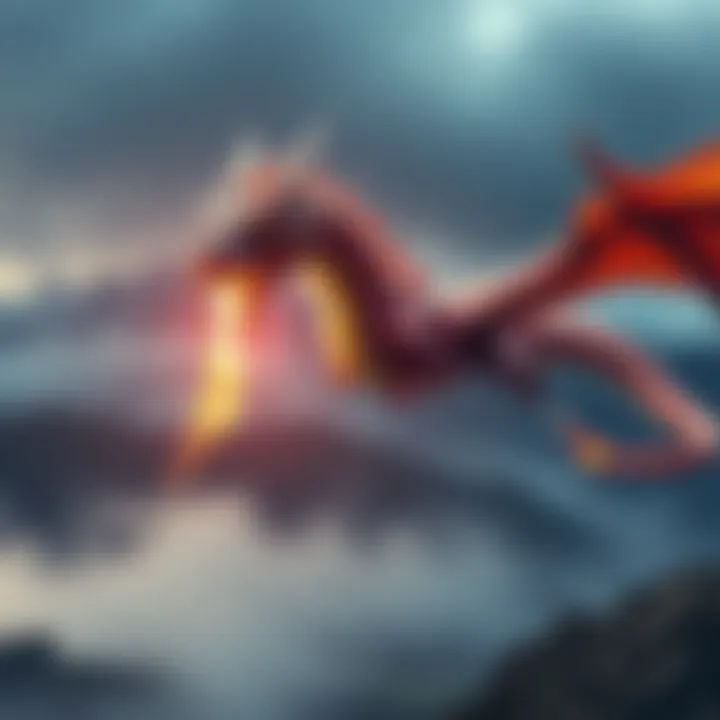Dragons | Cultural Connections Spark Debate on Their Existence
Edited By
Nina Bard

A recent discussion on forums has reignited the age-old debate about dragons, their cultural significance, and whether they ever existed. With various cultures independently depicting dragons as fire-breathing creatures, key commenters argue over the myths and realities surrounding these legendary beings.
Conflicting Views Among People
Many people believe dragons symbolize more than just mythical creatures. Commenters point out that not all dragon myths include fire. For instance, some cultures portray them as poisonous or linked to natural elements such as water or storms. As one commenter stated, "Many dragons do not breathe fire in myths!" Highlighting this diversity suggests that the core of dragon stories may stem from human imagination rather than a shared experience of real creatures.
Are Fossils the Key?
One key argument against the existence of dragons relies on the absence of fossil evidence. A frequent point made in discussions is that "we have no fossils of dragons, which we would have found by now if they did exist." However, counterarguments note that fossilization conditions are rarely ideal. A user pointed out that the chances of fossilization network lower than 0.1% for many species. This raises questions: Could dragons have existed in environments hostile to fossil creation?
Cultural Exchange as a Factor
Another perspective argues against the notion that these cultures were completely disconnected. Users highlighted significant trade and interaction across Eurasia throughout history. Dramatically, one commentator remarked, "Even during the bronze ages, you had Indus Valley stuff popping up in burials in the Middle East." This suggests that dragon tales might have spread widely, adapting to local cultures as they traveled.
Key Takeaways
🐉 The portrayal of dragons varies: Fire-breathers, poison-spewers, and elemental beings.
📜 The absence of fossils does not rule out dragon existence: Conditions for fossilization are poor.
🌍 Cultural exchange played a role in spreading dragon myths between isolated societies.
The dragon debate continues to inspire fascination and skepticism alike. As people share their thoughts, the conversation reveals how much we still ponder the intersection of myth, reality, and cultural storytelling.
Eyes on the Horizon: What’s Next for Dragon Enthusiasts?
As discussions heat up around the existence of dragons, there’s a strong chance that scholars and enthusiasts will ramp up their research. Analysts predict that in the next few years, archaeological digs in regions long associated with dragon lore—like parts of Eastern Europe and Asia—will yield new findings. Experts estimate around a 60% probability of discovering artifacts that might align with dragon myths, which could either bolster or dismantle arguments for their historical existence. The evolving dialogue may also push folklore studies into more scientific realms, sparking interdisciplinary collaborations that further enrich our understanding of cultural myths.
An Unexpected Echo of the Past
A striking parallel can be drawn between the current fascination with dragons and the historical obsession with the mythical creatures of the Renaissance. Back then, people were just as preoccupied with legends like unicorns, often fueled by travelers’ tales and artworks. Some explorers exaggerated their accounts, enticing others to pursue the hunt for these elusive beings. Similarly, today’s dragon debates may not just be intellectual exercises; they could inspire a new generation of myth-hunters, akin to those Renaissance figures who sought the fantastical amidst their reality. While dragons may remain elusive, the creative curiosity they ignite mirrors humanity's enduring desire to connect the dots between fact and imagination.
